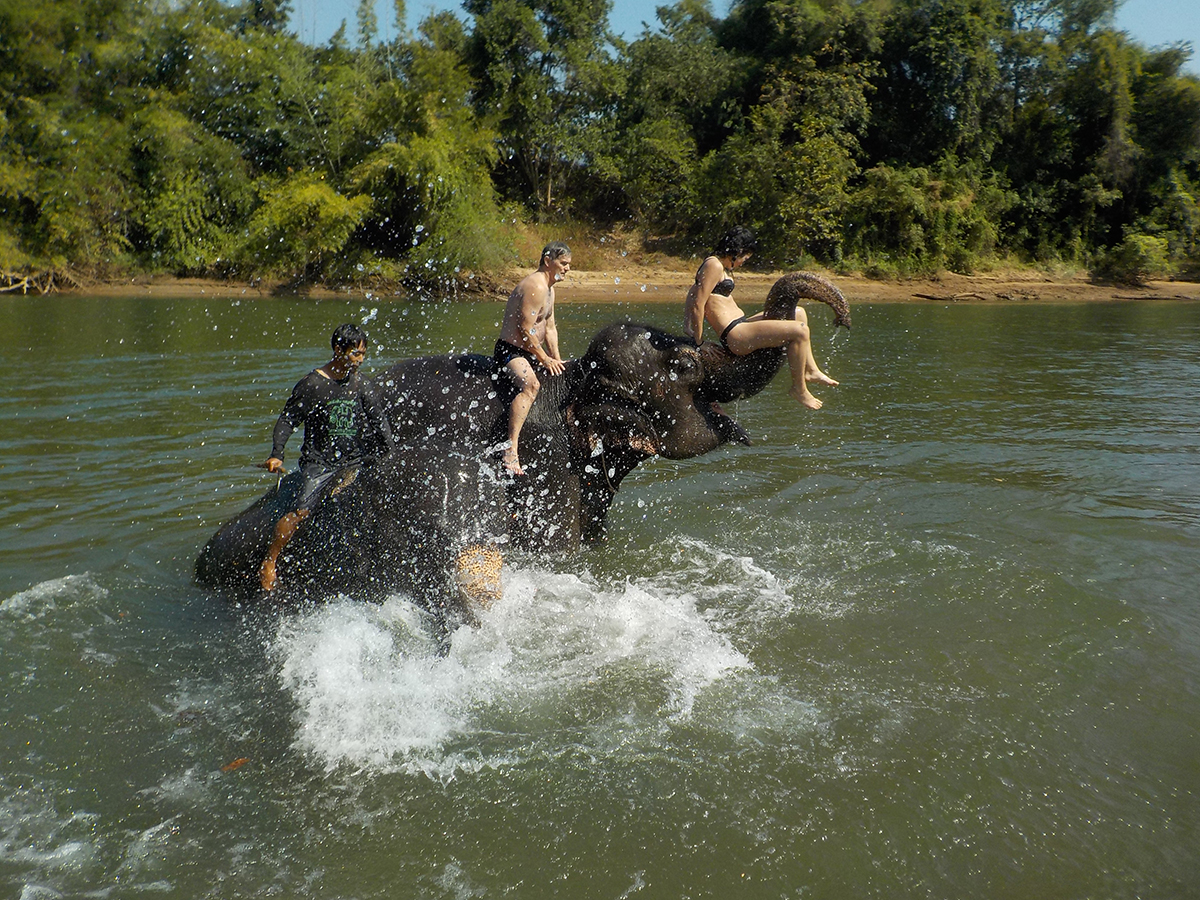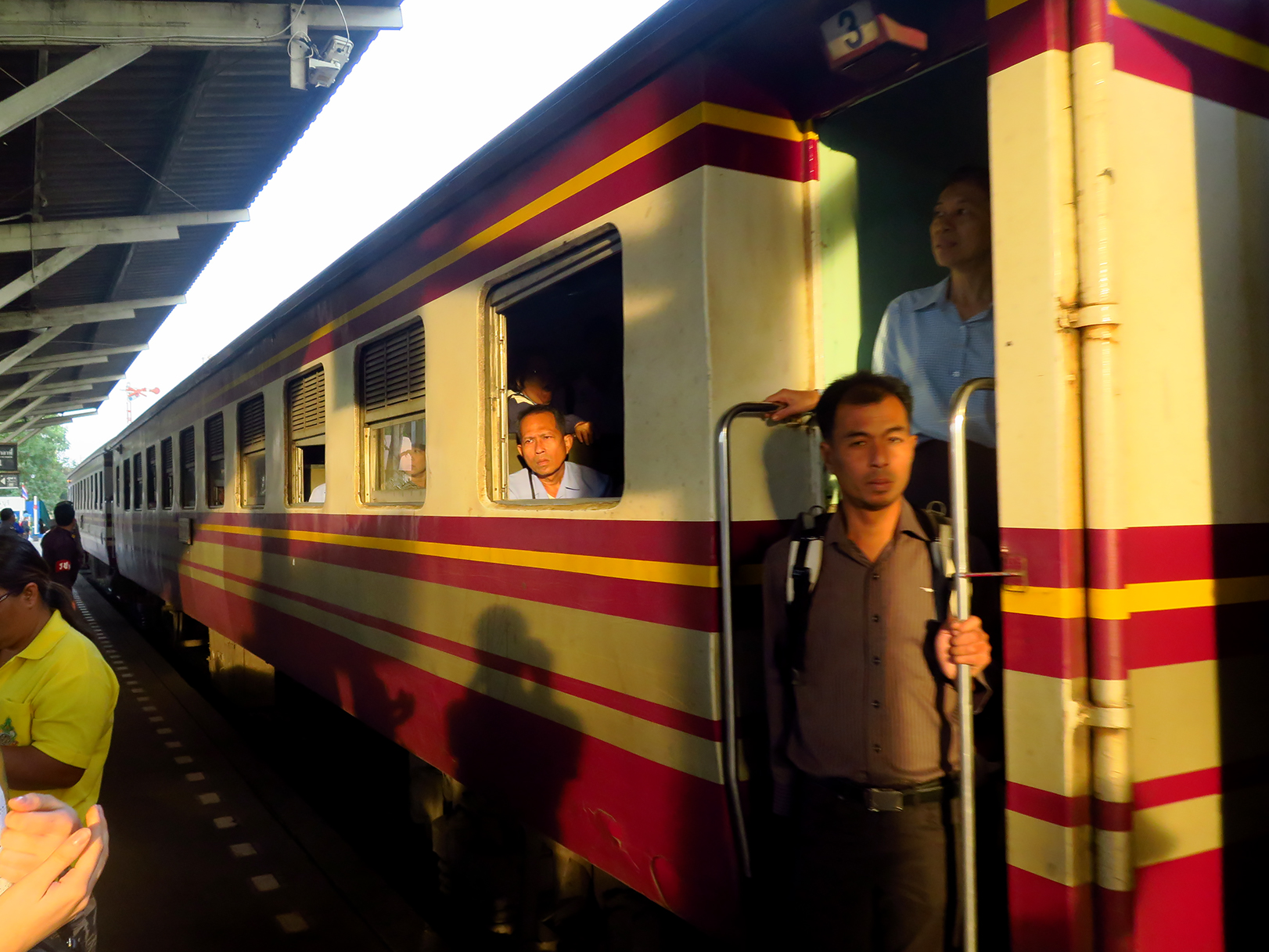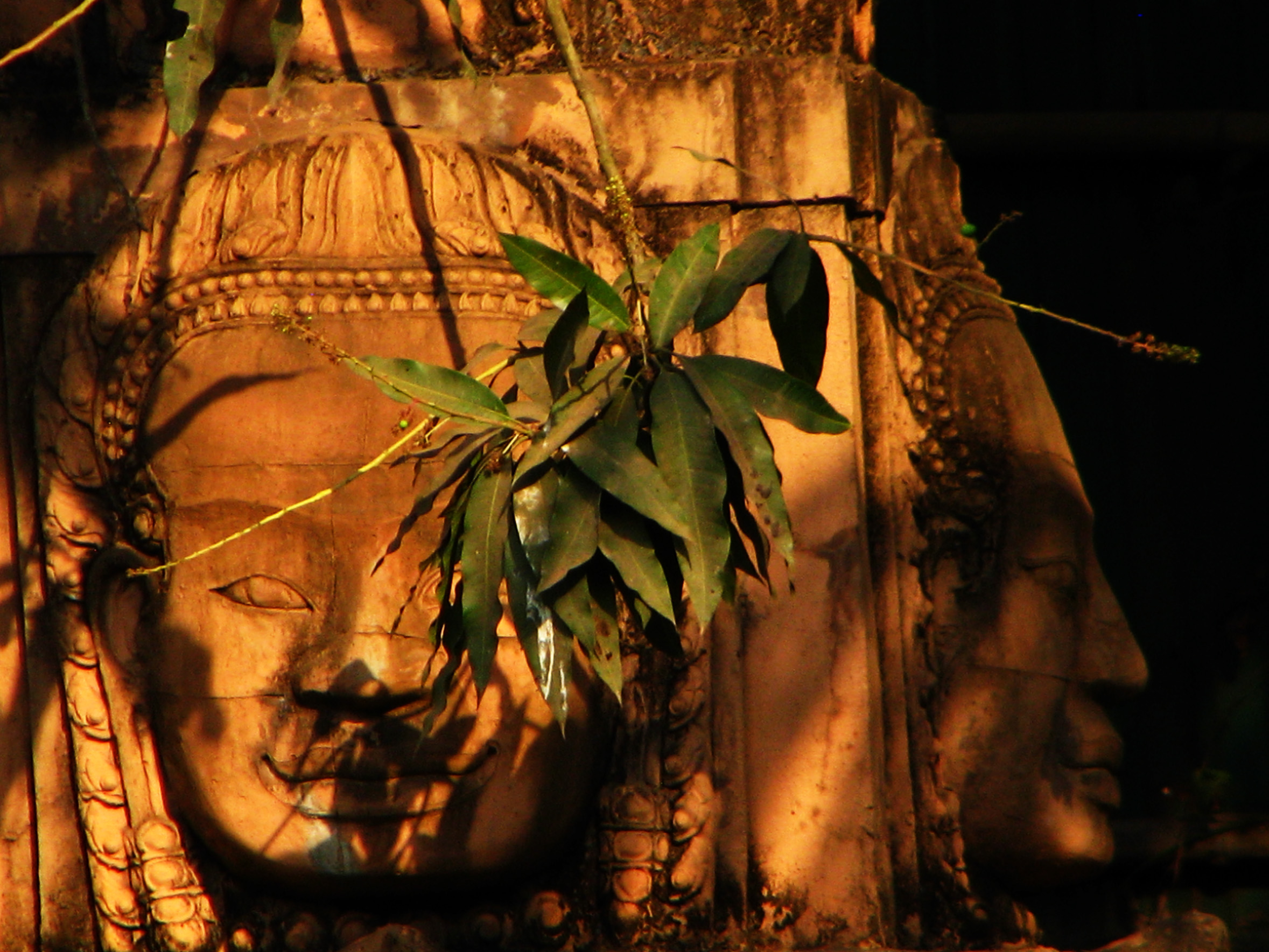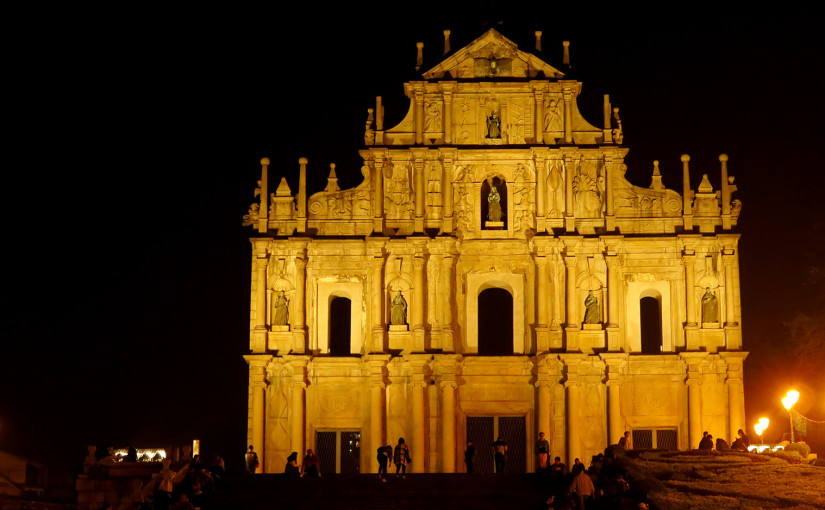These gimbal balanced V8, and V6 powered engines are attached to long horizontal shafts, with a propeller on the other end; hence the name “long-tail”. In shallow water these propeller shafts are balanced half out of water, and literally whisked us up river to our hotel’s stunning location.
Overlooki ng not just a river, but a river made famous by villainous deeds inflicted by the Japanese during the Second World War on their helpless victims. They rushed to make a supply-line railway that would connect the Bay of Thailand with Burma’s Andaman Sea; bypassing the narrow choke-point in the Straights of Singapore, and leading to India’s Bay of Bengal where they could continue their military expansion.
ng not just a river, but a river made famous by villainous deeds inflicted by the Japanese during the Second World War on their helpless victims. They rushed to make a supply-line railway that would connect the Bay of Thailand with Burma’s Andaman Sea; bypassing the narrow choke-point in the Straights of Singapore, and leading to India’s Bay of Bengal where they could continue their military expansion.
More than 100,000 died during this deadly atrocity that’s spawned books, memos, and a famous 1957 movie – The Bridge on the River Kwai. Now every tree, every cliff and cave, every bend in the water could not be looked at without imagining what they witnessed 70 years earlier!
Fast forward to the here and now, in Central Thailand, and hidden from foreign hordes is the setting for true adventure. Where the words about journeys and destinations meld into one. An absolutely idyllic, rustic, setting that begged living to the fullest. You could actually feel both a subdued tension of adventure in the air and a whispered breeze of relaxation at the same time.
The central lodge exudes local antiques in its every nook and cranny. Curios are displayed in a way that implies simplistic and random informality; but the overall affect says they were deftly placed by an interior designer’s keen eye for perfection. Going up the lodge’s stair case takes you from a comfortable lounging area to the main floor’s registration desk, bar, restaurant. As well an entry portal to the properties upper level’s cabins, mini-lake, and outdoor spa area. Continuing up takes you to the 3rd floor Thai massage balcony – so many choices.
Unfortunately, our stay was going to be short, two nights, so we had to make the most of each day; first keys to our room, and a quick check to ensure they met expectations: check – in spades! Comfortable, quiet, with lots of outlets to charge all our devices, and a commanding view of the river below from the duplex’s small veranda.
Next, after a quick walk around the lower grounds, to see its well-kept, but simple displays of trees, shrubs, and striking flowers; we needed to return to the activities desk to plan the following day’s events. Seeing elephants was high on our agenda, and we were told there were two nearby sanctuaries to choose from; the one with a river experience, not knowing exactly what that entailed, but with an idea it was far from the norm seemed the most interesting.
That done, time for a swim, my daughter was waiting by the pool demanding I take photos of her new friend — a cinnamon colored dragon fly. Apparently it had landed on her sunbathing body’s foot and knee many times and even with movement choose to stay, either on her, or on a nearby leafy branch.
Other sunbathers, who noticed this intimate act, came up to her and reveled in telling her renditions of such a significant event; At the very least a rare experience reserved for special people. But others said that was only half true, it was also a visit from someone on the other side!
Our next pleasant surprise was at dinner: efficient staff, a diverse menu, and balcony sitting that overlooked the gardens, pool and river was a picture perfect setting. The food could have been just average, and all would have been OK, but it was much more than that, it was delicious. The Thai Tom Yum Goong (hot & sour soup), Som Tum (papaya salad), and of course the very traditional Moo Satay (skewered bar-b-q’ed pork with peanut sauce dips), were sumptuous! Add a tasty mojito and you have concluded a most rewarding day!
Sleep was easy – and waking up was something to look forward to; my daughters dream, to get close and personal with elephants in a non-touristy type of way would exceed her wildest expectations – but first breakfast. Included in our stay was more than just a simplistic meal one would expect, and have experienced previously at other hotels in North America; here an immense selection of tasty Western and Asian food was provided to easily fuel our day.
Fully fed, we were ready for our elephant foray … I’ve been on typical tourist elephant rides before, and promised myself I would never do again, but some photos I came across online hinted that this might be different. First we had to jump into our high-speed, long-tail boat and head downstream for about 20 minutes. We were unceremoniously dropped off at a simple wharf, and with a simple hand gesture pointed to a path way up a hill, which of course challenged us with a fork, and a decision to go left or  right; left was the wrong way and we quickly reversed course and found the path to the elephant farm’s open air office, snack shack, and tourist gift store.
right; left was the wrong way and we quickly reversed course and found the path to the elephant farm’s open air office, snack shack, and tourist gift store.
We seemed to have the place to ourselves, as no other travelers could be seen; however, my daughter soon spotted something, a baby elephant, and the little girl in her had her running towards it faster than you could say – look at that!
Before I got close the two of them were locked in a peculiar embrace – the small elephant using its trunk and Sierra holding it with one hand as she petted it with the other. The sanctuaries staff quickly offered food and a bottle of milk for her to feed the elephant with. Sierra was in maternal heaven bonding with a 200 kilo baby.
Later we were taken to the elephant loading ramp, and my expectations plummeted – it was so typical! A touristy two-person, basket-like saddle mounted on an elephant. I thought shuzbut, this is not going to be exciting at all; and true to form the guide and elephant gave us a 20-minute boring ride around the farm, before bringing us back to the loading ramp to unload.
I thought that’s it, that’s what we came here for? But just as that disappointing thought had finished an attendant pointed us back to loading area – two elephants had suddenly appeared with no basket saddles; just one guide on each one. We eased ourselves on each one, in front of the guide, with just a light collar rope to hang onto for balance as we rode precariously until a sense of steadiness could instill confidence. Next we encouraged the giants down same path we had come up from the river on earlier; but didn’t stop when we got to the water’s edge — we just kept on going.
Soon we were mid-stream in 1.5 meters of water, and the fun began. Sierra was told to move up as far forward as she could until she was sliding down the elephant’s trunk. The elephant quickly raised its trunk to halt her slide, and held her leaning there against its leathery forehead. Then the mammoth raised itself as high as it could by squatting down on its hind legs, and stretching up as much as possible, putting Sierra about 4-meters in the air. Next a whistled command and it came crashing down flinging my daughter about a meter in front with a gigantic splash of water – a Kodak moment!
After that initial solo splash we all became embroiled in a tremendous water battle – even the elephants. They were taking turns tossing us into the water, or we would stand up on them and dive in. The novelest, using the elephant’s ability to suck up large amounts of water with their trunks, and then aiming them at each other in a most bizarre water gun fight I’ve ever participated in – making a Super Soaker Water Blaster seem like … well, a toy!
Leaving the river, the guides had us ride own our own elephant home. They gave us rudimentary voice command lessons, and then the two of them rode off, leaving us in charge of our monstrous steed. Yes, there was a moment of fear, as we left the water to head up the hill, but that was soon replaced by practicing our “he-ya” call along the 200-meter trail to encourage our mount back to the loading dock we started from – it was a strange feeling to be riding bareback, on our own atop these slow, sure footed beasts. There was a satisfying bonding and feeling of exhilaration at the same time with each step. After unloading there was an immense sense of accomplishment that put our experience at the top of any expectation list we could have possibly had.
A dozen other travelers had arrived at the elephant sanctuary, and I am sure they noticed our ear-to-ear grins after our most amazing elephant encounter; but they seemed to be satisfied with just watching elephants practicing basketball hoops, painting and photo-ops – to each their own; but I know we had much more fun.
We waved goodbye to our guides, and office staff and headed back to our boat for the ride back home to our hotel – both father and daughter much closer after our shared adventure. And not knowing Sierra had more ideas of what was yet to happen.
On our mid-afternoon return there was a need, or was that a want, to have a Thai massage, and for about $40US, expensive by some Thai standards, we headed up to the 3rd level massage balcony for a relatively mild kneading, pulling, twisting, and stretching; much less painful than I’ve had before; but much more relaxing in the end … is there such a thing as a bad massage – No!
At supper, my daughter excused herself from the table; to use the washroom, I thought. But then I heard the night’s keyboard entertainment switch into the familiar tune of Happy Birthday to You; followed by my daughter’s familiar voice as she began singing, in a most memorable way, for my 65th birthday celebration – she had even got the kitchen to whip up an impromptu pineapple birthday cake – what a treat! What a great day: fun and excitement, boat travel, soothing massage, and a dedicated song and cake just for me. I was a happy man.
We would depart the following day, but planned a kayak trip in the morning that would leave us lots of time to pack, and check out by 11:30 to hopefully be at the train station’s return to Bangkok. Our morning agenda was a little tight, so following breakfast we quickly headed down to the dock and jumped into our long-tail to go up river to the kayak zone’s pickup. There were two surprises waiting for us as we took the 12-minute trip: one, there were two floating lodges on the river not far from our hotel, that looked like they provided strong 4-star experiences, which is itself another story in Thailand; and secondly where we got into our tandem kayak, was a peculiar choice as it was the only place I had seen that had fast currents and strong back eddies. After that apprehensive thought we were both helped into our plastic shell and pointed out towards mid-stream, with a warning that if we heard a high-speed long-tail coming then we should go as close as possible to the shore.
That warning was heeded a few times, and there were never any close encounters that would have marred our peaceful day. The quiet of kayaking was amazing, we had a guide in his own light craft, and he seemed intent on watching the shores – as if he were looking for signs of wildlife, but none was ever seen. The next sensation was another throw back in time – the poignant history of this history; almost vividly you could imagine shouts going out as captors searched for escapees from the Japanese prisoner-of-war camp, and the inevitable screams as they were caught and tortured.
Bits and pieces of old concrete construction could be seen along the shore, and its reason for being added to the intrigue of an imagination gone wild.
As we lightly paddled to our dock there was nothing but regret – why had we chosen to stay only two nights at this magical location … a week would even be too short.
Fast facts:
Transportation: The train from Bangkok to Nom Tok is often late, especially on the return trip. Buses are also available as are private taxis. Prices range from 100Bht to 4500bht. there were always drivers available at public terminals that were much cheaper than hotel arranged transport.
Money & Prices: exchangers at the airport give an OK rate, but city exchange office’s rates are usually better, by 1-2%. There seems to be price zones – the southern touristy beach areas were all more expensive than Central Thailand, and I was told that N.E. Thailand has even lower inflated prices.
Health: We always used bottled water; but ate a variety of items ranging from street food to three/four-star restaurants and never had any upset stomachs.
Accommodation: There are several hotels along the River Kwai, most are floating, and a few along the river front; most are owned by the same company – Serenata. Ours was the River Kwai Resotel.
Nom Tok: Drivers always seemed available at public terminals that were much cheaper than hotel arranged transport.Major attractions: Bua Thong Waterfalls; Hellfire WW2 Museum, several cave sites.
































































































































